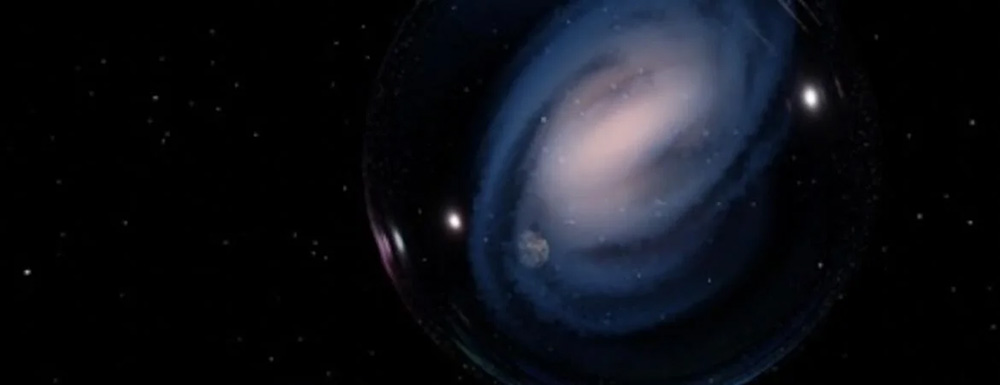Spiral galaxies like the Milky Way are like cosmic snowflakes—no two are exactly alike. For many years, astronomers thought spirals couldn’t exist until the universe was about half its present age. Now, a newly discovered galaxy in the early Universe is challenging that idea.
CEERS-2112 is an early “cosmic snowflake” with spiral arms and a bar across its middle. The amazing thing is that it’s showing this structure when the Universe was only 2 billion years old. That’s about five billion years earlier than astronomers expected something like that to exist. The fact that a perfectly formed spiral exists so early tells us that our ideas about galaxy formation in early cosmic history need some re-tuning.
Surveying the Early Universe
This galaxy showed up in a survey done by the JWST called “Cosmic Evolution Early Release Science” (CEERS). It uses JWST imaging and spectroscopy to do a survey of the early Universe to find the earliest galaxy. The analysis of the CEERS-2112 galaxy was done by an international team led by astronomer Luca Constantin of the Centro de Astrobiología in Spain.
CEERS results should show astronomers the early populations of galaxies at high redshifts (distances). They will also help them estimate related star-formation conditions and black hole growth. Finally, the work should give some insight into the formation of galaxy disks and bulges. Essentially, CEERS data should add to our store of knowledge about first light and reionization (which occurred after the Big Bang) and explain the formation and evolution of early galaxies.
Early deep-field images of very distant galaxies show shreds of galaxies and irregular clumps of stars in the early Universe. That was evident in some of the first Hubble Deep-Field images. The most distant ones in the images looked more blobby and indistinct. And, some of them appeared to be colliding, which fits into the collisional model of galaxy formation.

Forming Galaxies in the Early Universe
Prior to the Hubble and JWST eras, astronomers really felt that it would take a long time to form spiral galaxies. They often describe a hierarchical model of galaxy formation. That’s where smaller clumpy galaxies collide to form larger ones. Over time, those objects begin to develop structures like spiral arms and bars.
“In such galaxies, bars can form spontaneously due to instabilities in the spiral structure or gravitational effects from a neighboring galaxy,” according to astronomer and team member Alexander de la Vega. He is a post-doctoral researcher currently at the University of California Riverside. “In the past, when the Universe was very young, galaxies were unstable and chaotic. It was thought that bars could not form or last long in galaxies in the early universe.”
The spiral arms are likely the result of density waves moving through the galaxy. The bars also form from density waves radiating out from the center. That compresses material in the arms and bars, leading to bursts of star formation. That could explain why these regions in galaxies seem brighter, with their populations of hot young stars. All of this takes time to accomplish. That’s why astronomers suggested that it would take about half the age of the Universe to form spiral galaxies.
CEERS-2112 is Part of the Early Universe
CEERS-2112 upends the discussion about spiral formation, according to de la Vega. “Finding CEERS-2112 shows that galaxies in the early Universe could be as ordered as the Milky Way,” he said. “This is surprising because galaxies were much more chaotic in the early Universe and very few had similar structures to the Milky Way.”

Of course, the existence of CEERS-2112 in the infant Universe changes theoretical models about early galaxy formation. For one thing, it looks like not everything was a mishmash of odd little galaxy shapes. If CEERS-2112 is any indication, some were quite stable very early on in their existence. They could host central bars and the beginnings of spiral arms.
In addition, this early “orderly formation” implicates dark matter and the role it played shortly after the Big Bang. “These models may need to adjust how much dark matter makes up galaxies in the early Universe, as dark matter is believed to affect the rate at which bars form,” said de la Vega.

The CEERS-2112 discovery shows us that bars and spirals are detectable at very early epochs, even in these small, distant, dim galaxies. The JWST observations are also giving astronomers a chance to make firm estimates about the shape and mass of this galaxy’s central bar.
Rethinking Theory
The discovery of CEERS-2112 will force a rethink about conditions in the early Universe. Where astronomers once thought it was a several-billion-year-long process to get from a “clump of stars” to a “barred spiral”, it now appears that it can happen more quickly. “The discovery of ceers-2112 shows that it can happen in only a fraction of that time, in about one billion years or less,” de la Vega said.
That kind of rapid creation of spiral arms and bars means that the Universe (and its dark matter component) ordered its structures fairly quickly, through the processes of star formation and galaxy collisions.
For More Information
Milky Way-like Galaxy Found in the Early Universe
A Milky Way-like Barred Spiral at a Redshift of 3
CEERS Overview

